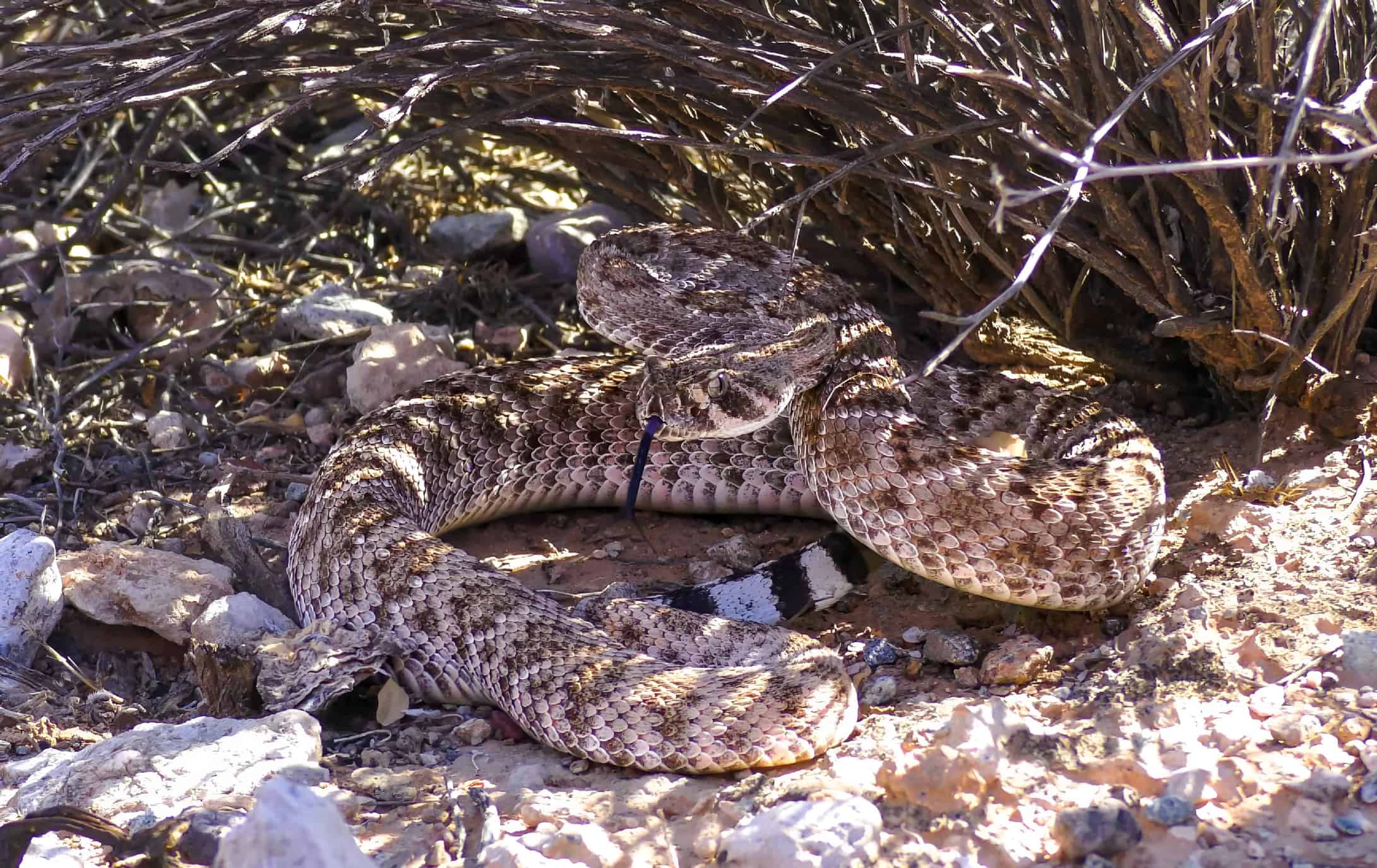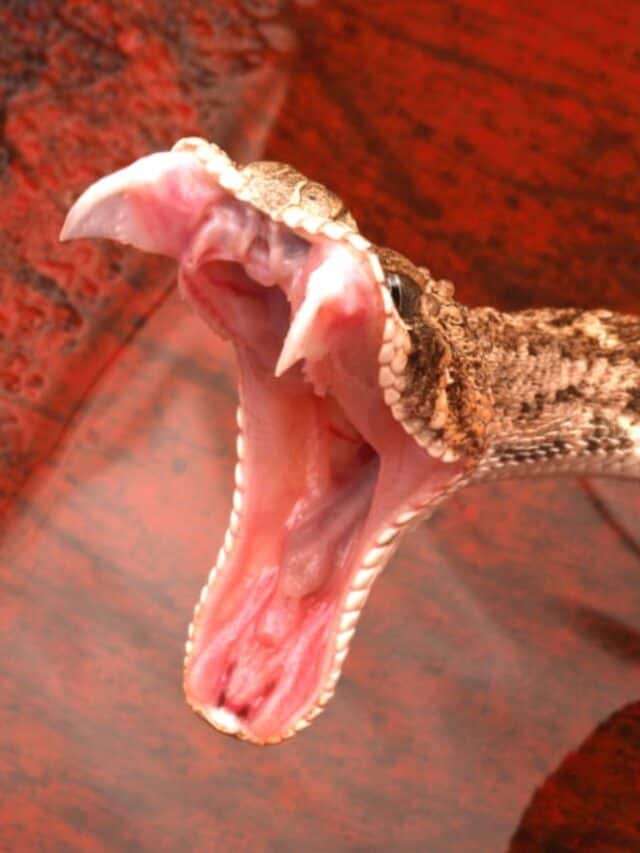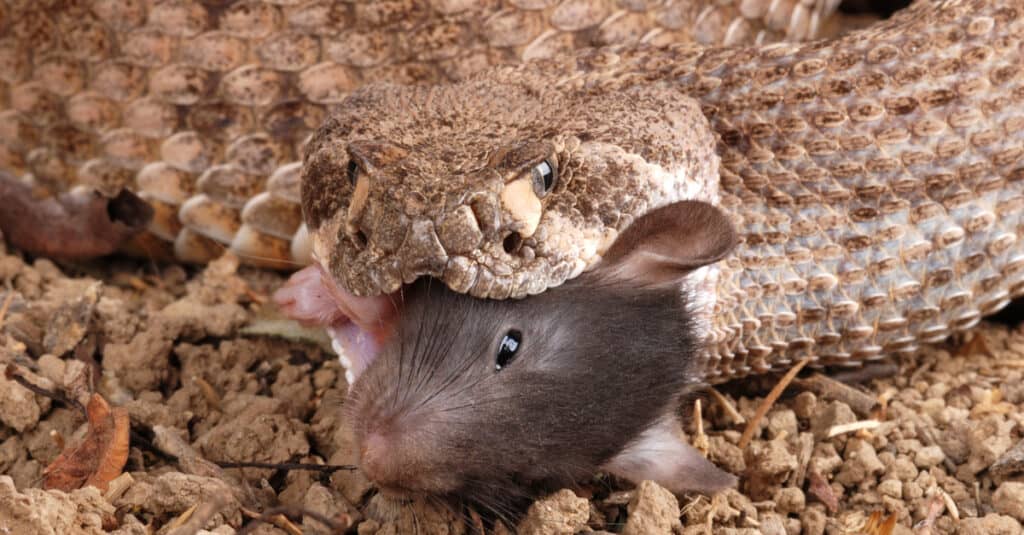Continue reading for our analysis...

We join the action as a member of a snake location team is heading out to see a farmer who has found a rattlesnake in his barn. He explains that as he opened the door it was right ahead of him but he didn’t check either side for more snakes, he just shut the door right away. A very understandable reaction to seeing a venomous snake!
Rattlesnake Removed From a Barn
The rattlesnake expert and the farmer head toward the barn where he keeps his horses. She opens the door to a storage cupboard and spots the snake immediately. The farmer thought that by shutting the door it would at least keep the snake in an area where it could be recovered and they would not have to go hunting for it!

Rattlesnakes like to hide and rest in cool places during the summer.
©Audrey Snider-Bell/Shutterstock.com
There is a Western diamondback rattlesnake of average size curled up on a shelf. The snake expert picks it up with her pinchers and places it in her secure box. Then, she checks out the rest of the area in case any other snakes are hanging out but this particular snake seems to be alone.
She explains that the cupboard is an ideal spot for the snake to hibernate. If it hadn’t been removed, it would have stayed there for the colder months. The rodent poop indicated that there were rats and mice around which would be a source of food for the snake. This snake was released into the wild close to another great hibernation den.

Western diamondback rattlesnakes feed on rodents.
©Audrey Snider-Bell/Shutterstock.com
About Western Diamondback Rattlesnakes
Rattlesnakes are a member of the pit viper group of snakes and are easily recognizable by the rattle on the end of their tails. The Western diamondback rattlesnake likes to live in arid desert and semi-desert conditions. They have thick bodies and are usually around four or five feet long. They prefer to avoid humans and do not seek us out to attack them but they will strike if they feel threatened. Their venom causes damage to blood, heart, and muscles so if you are bitten you need medical help right away.
These rattlesnakes feed on small mammals (such as mice, woodrats, and rabbits) as well as lizards. When they hibernate, they are not completely inactive. It is a type of brumation when they are sleepy and very sluggish. This makes them a bit easier for the experts to handle!
Other Amazing Animal Videos You Might Like
Watch as a videographer encounters snakes in Arizona! He encounters a rattler sleeping beside a footpath as well as blending into its surroundings in the wild. The footage certainly makes you realize how careful you need to be while hiking in Arizona! Perhaps the most fascinating footage is of two joggers passing a rattlesnake on the road. The snake seems completely unscathed by the humans.
Discover the "Monster" Snake 5X Bigger than an Anaconda
Every day A-Z Animals sends out some of the most incredible facts in the world from our free newsletter. Want to discover the 10 most beautiful snakes in the world, a "snake island" where you're never more than 3 feet from danger, or a "monster" snake 5X larger than an anaconda? Then sign up right now and you'll start receiving our daily newsletter absolutely free.
Thank you for reading! Have some feedback for us? Contact the AZ Animals editorial team.






